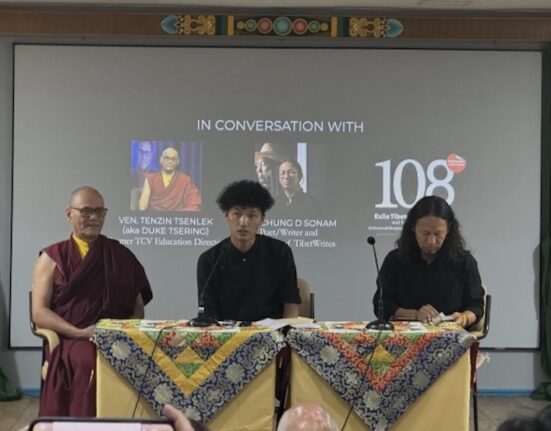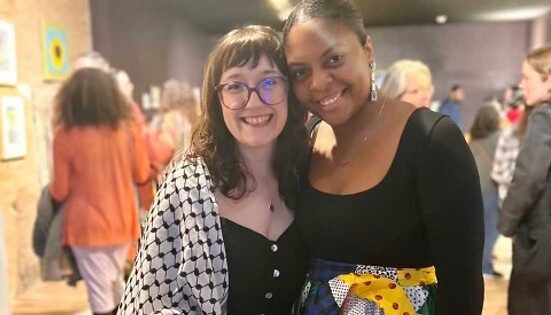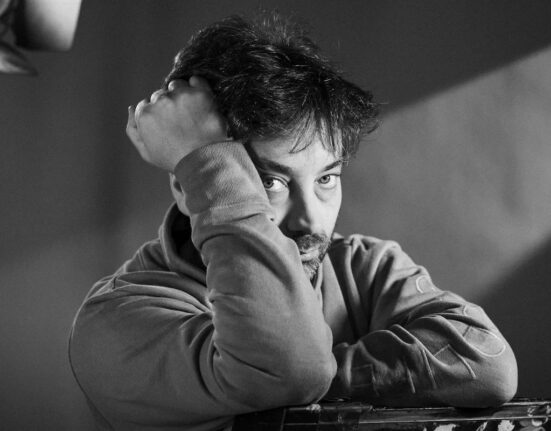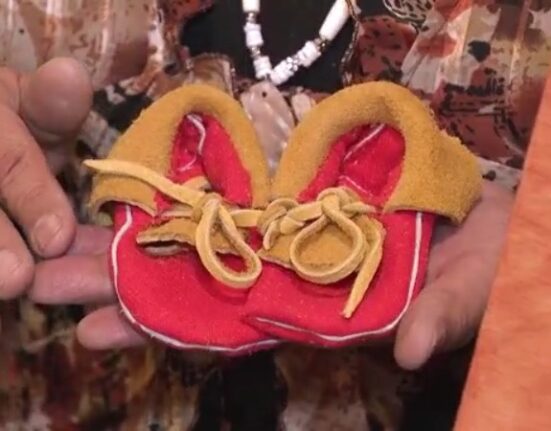This semester, as visitors enter the McMullen Museum of Art, they are taken back in time to mid-20th century Havana, Cuba. The Lost Generation: Women Ceramicists and the Cuban Avant-Garde exhibition presents an array of artwork created between 1949 and 1959, at the Taller de Santiago de las Vegas studio. The bilingual English-Spanish exhibition aims to highlight the importance of lesser-known female artists in the Cuban ceramic world.
“The workshop became a protagonist in this exhibition because of its fundamental role in providing space, as well as a creative and supportive environment, in which this first nucleus of women were able to produce some of the finest examples of Cuban modernist design,” said Elizabeth Thompson Goizueta, curator and former assistant director for Spain and Latin America at Boston College’s Office of International Programs.
Two human-sized, black-and-white photographs on either side of the room greet visitors as they enter the gallery. Attributing a sense of intimacy to the art, the pictures—both taken in 1953—present the artists behind the works displayed. Among the artists are Amelia Peláez, María Elena Jubrías, and Mirta García Buch.
Though most of the exhibition revolves around Cuban women and their art, Juan Miguel Rodríguez de la Cruz was at the center of operations at the Taller de Santiago de las Vegas, which was a pottery shop in Cuba during the ’50s that gave women a chance to create pottery.
De la Cruz was the proprietor of the Taller de Santiago de las Vegas, which meant he was in charge of forming and firing the ceramics, designing the goods, and hiring the ceramicists, Goizueta explained. This opened the doors for female artists—many of whom received their training from the esteemed Academia Nacional de Bellas Artes San Alejandro in Havana—to explore their talents.
“At the McMullen Museum we have had exhibits on many of the Cuban male painters that also participated in the 1950s ceramic and mural movement,” Goizueta said. “Any Cuban collector or scholar would recognize the names of the male artists that participated in ceramics. Almost no one recognizes the women’s names, and, if recognizable, their names are not synonymous with aesthetic ceramic creation.”
Peláez was one of Cuba’s most renowned artists of the 20th century according to the title cards on her ceramics. In charge of painting a great part of the ceramics sculpted by Rodríguez, Peláez made art featuring recurring motifs—faces in profile, birds in flight, fish mid-swim, interior architecture, and flora, most of which can be observed in kettles and honeypots.
“Peláez was responsible for bringing into the workshop many of her male colleagues from the premiere arts academy, San Alejandro,” Goizueta said. “Together with the other women at the workshop, they were able to teach the celebrated Cuban modern masters the techniques and fundamentals of designing on pottery.”
Flower Pot with Fish-Man by Buch, draws inspiration from her Afro-Cuban and Chinese heritage. The black-and-white, Pablo Picasso-esque patterns seen in this piece were influenced by the different ancient philosophies that aimed to highlight the significance of nature. The exhibit label in the piece indicates that the aquatic and avian creatures, on either side of the central eye, represent earth, air, fire, water, and either ether or metal.
The initials or signatures of seven of the most prominent figures of the Taller de Santiago de las Vegas—Rosa Jiménez, Aleida González, Jubrías, Buch, Marta Arjona, de la Cruz, and Elia Rosa Fernández de Mendía—can be seen on the piece titled Collective Plate with Fish Motifs. A white dish with orange borders and signed marine creatures, the artwork is a reflection of the workshop’s effort to encourage artists to take ownership of their designs.
“The Lost Generation has a twofold purpose: to elevate the works of ceramics and to shine a spotlight on the women who produced them,” Goizueta said. “The interesting takeaway is that these women were recognized and participated, in their day, along with the male artists and colleagues through public exhibitions and afforded equal attention in newspapers and cultural reviews. So it is history who has forgotten these women.”
Running from Jan. 29 to June 2, the exhibition features nearly 150 pieces, including never-before-displayed ceramics from Taller de Santiago de las Vegas’s collection and can be found at the Daley Family and Monan Galleries on the second floor of the McMullen Museum.







